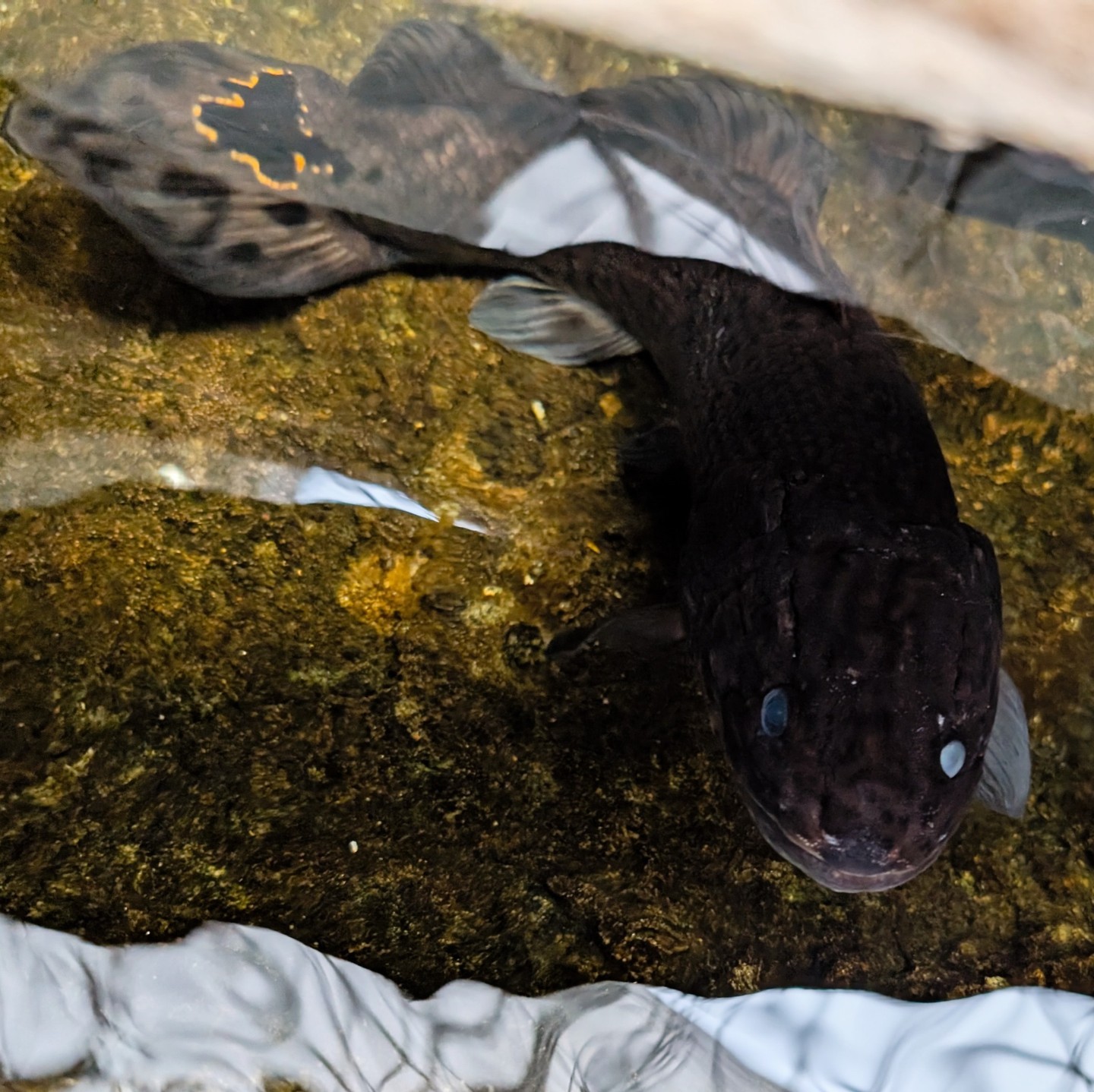- Bowfin’s evolutionary adaptations that enable survival in low-oxygen environments.
- The physiological mechanisms behind bowfin’s ability to gulp air.
- Historical significance and evolutionary success of bowfin dating back over 100 million years.
- Ecological and conservation considerations for bowfin in their natural habitats.
- Importance of understanding and preserving bowfin and similar resilient species.
Bowfin, a fascinating species of predatory fish, have thrived for over 100 million years thanks to their remarkable adaptability. These ancient fish possess a remarkable survival tactic that sets them apart from many other fish species: they can gulp air and store it in a lung-like gas bladder. This unique adaptation allows bowfin to inhabit low-oxygen environments and even survive out of water for brief periods.
The bowfin’s evolutionary adaptations are key to understanding their long-term survival. These adaptations are particularly significant in environments where oxygen levels can fluctuate wildly. In stagnant or poorly oxygenated waters, many fish struggle to extract sufficient oxygen through their gills alone. However, bowfin can supplement their oxygen intake by breathing air directly. This capability stems from a specialized organ known as a vascularized gas bladder, functioning similarly to a lung. This characteristic isn’t just advantageous for survival during periods of low oxygen but also grants bowfin the ability to colonize a wider range of habitats compared to more oxygen-dependent species. By understanding bowfin’s evolutionary biology, researchers gain insights into the resilience of species facing similar environmental challenges.
The physiological mechanisms enabling the bowfin to gulp air are a fascinating aspect of ichthyology. Unlike most fish that rely solely on gill respiration, bowfin have developed a highly efficient respiratory system capable of dual functioning. In addition to gills for extracting oxygen from water, their gas bladder acts like a primitive lung. Bowman can fill this bladder by coming to the water surface and gulping air, allowing for effective oxygen storage and usage. Once filled with air, the gas bladder works in conjunction with the blood vessels, facilitating oxygen exchange. This adaptation not only aids survival in hypoxic conditions but also offers an evolutionary advantage, supporting their persistence in various aquatic ecosystems over millennia.
The historical significance and evolutionary success of bowfin provide a window into the resilience of life on Earth. Originating in the Mesozoic era, about 150 million years ago, bowfin have witnessed monumental biological and environmental changes, surviving mass extinctions that wiped out countless other species. Their continued existence today highlights a story of evolutionary triumph, stemming from adaptability and resourcefulness. As modern descendants of ancient fish lineages, studying bowfin informs our understanding of both historical ecosystems and the evolutionary processes that shape biodiversity today. They serve as a biological bridge, connecting the distant past with the present, offering lessons in both resilience and adaptation.
Ecological and conservation considerations are critical as we strive to protect bowfin and their habitats. As indicators of ecosystem health, the presence of bowfin can signal the stability of an aquatic environment. Their ability to survive in low-oxygen waters challenges an often-held assumption about the fragility of aquatic life, reflecting an ongoing need for diverse conservation strategies that account for varying species adaptations. Conservationists emphasize the need to safeguard the diverse habitats that bowfin inhabit, including swamps, marshes, and sluggish streams, against pollution, habitat destruction, and the effects of climate change. Sustainable water management practices and habitat restoration efforts play a significant role in ensuring the longevity of these ecosystems and the species that reside within them.
Understanding and preserving bowfin is of utmost importance, not only for their ecological roles but for what they represent within the broader context of biodiversity and environmental management. Their resilience holds valuable lessons for biodiversity conservation, particularly in the face of mounting ecological pressures and climatic unpredictability. By protecting bowfin and studying their adaptive strategies, scientists can gather insights pertinent to conserving other species facing similar environmental stresses. Such efforts are intrinsic to fostering a holistic approach to wildlife conservation, ensuring that both today’s and future generations can continue to experience the rich tapestry of life that Earth sustains.
In summary, bowfin’s remarkable adaptation of air-gulping and gas bladder storage exemplifies the intricate relationships between evolution, physiology, and ecology. Their ability to endure for millions of years and maintain significant ecological roles emphasizes the importance of understanding these hidden hunters. By appreciating their resilience and ecological significance, we underscore the critical need for conservation efforts to protect such evolutionary marvels and preserve the complex ecosystems they inhabit.
*****
Source Description
👀 Look closely to see this hidden hunter!
Bowfin have a unique survival trick: they can gulp air and store it in a lung-like gas bladder, letting them thrive in low-oxygen waters or even out of water for short periods. This adaptation has helped them endure extreme environments for more than 100 million years! 🐟💨


